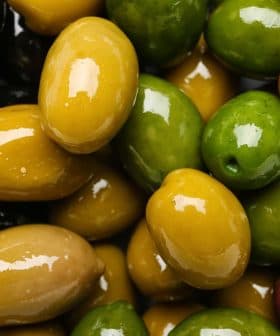Researchers Use Ultrasound to Detect Adulterated Olive Oil
Researchers from the University of Extremadura have developed a method using ultrasounds to detect adulterated olive oil, which can distinguish between different types of oils based on unique sound wave frequencies. This non-intrusive and portable technique can detect as little as one percent adulteration, making it a valuable tool for authorities, retailers, and consumers concerned about olive oil fraud.
As historically high olive oil prices have made authorities, retailers and consumers more wary of theft and fraud, researchers from the University of Extremadura have found a way to detect adulterated olive oil using ultrasounds.
“[This] pioneering study shows that ultrasound (sound waves outside the human hearing range) can detect different types of oils based on their unique sound wave frequency,” said Antonio Jiménez, a professor of applied physics at the University of Extremadura.
We have achieved excellent results so far and have discovered that the intensity with which waves travel and their distance change based on the type of oil. Each oil has a different acoustic sound.
Although his team began their research on ultrasound waves more than two decades ago, they only started work on olive oil analysis in 2017.
“We previously researched wines, honey, cured meats, and even objects like stones and archaeological structures,” Jiménez said.
See Also:Researchers Develop Easier, Cheaper Method for Measuring Free AcidityOnce the team began investigating olive oil and other edible oils, they tried to distinguish the acoustic profiles of olive oil, sunflower oil and soybean oil. “Subsequently, we combined different oils to study the mix with olive and sunflower oil,” Jiménez added.
Sunflower oil is one of the most commonly used edible oils in adulterating extra virgin olive oil because of its low price and similar fatty acid profile, especially when high-oleic sunflower oil is used.
Extra virgin olive oil can be adulterated with as little as five percent of other edible oils, making it very different to detect a change in flavor. As a result, Jiménez believes this new method will prove invaluable.
“Ultrasound transducers are immersed in the oil to analyze it,” he said. “These transducers are like microphones,” which can detect ultrasounds in the two million hertz range compared to the 25-hertz range the human ear can detect.
Jiménez explained that researchers can then determine whether olive oil is authentic based on “how the oil sounds,” adding that the oils have “different properties, such as acidity or fatty acids, to which ultrasounds are extremely sensitive, so any change in their physical structure will be detected.”
“We sent sound waves through the oil and listened to what returned using a special device that can read sound waves,” Jiménez said. “The results were outstanding.”
“We were able to distinguish extra virgin olive oil with as little as one percent of refined olive oil or sunflower oil,” he added. “Normally, as much as a ten percent adulteration is undetectable to a consumer, yet our device can detect as little as one percent change in the oil.”
Compared to traditional methods used to detect olive oil adulteration, Jiménez said ultrasounds are not intrusive, meaning the sample does not need to be altered physically or chemically to make the determination.
“It’s very similar to a pregnant woman who goes to the doctor for an ultrasound to find out if she’s going to have a boy, a girl or twins,” he said. “Of course, the fetus does not experience any harm. Well, the same goes for the oil.”
Jiménez also touted the ultrasound method as more practical than other methods used to test for olive oil adulteration, which often requires expensive laboratory equipment.
“Our technique is also economically affordable and portable,” he said. “The device can be moved to where the oil samples are.”
“We have achieved excellent results so far and have discovered that the intensity with which waves travel and their distance change based on the type of oil,” Jiménez added. “Each oil has a different acoustic sound.”
The slight change in chemical profiles among extra virgin olive oils means the technology could also determine olive oil provenance.
Authorities could identify whether an extra virgin olive oil with a Protected Designation of Origin or Protected Geographical Indication label is authentic by comparing the results to known samples.
“Now, we want to take it a step further and try to analyze the fatty acid components in a given sample, such as the amount of omega‑3 or omega‑6 and triglycerides in general,” Jiménez said.
“Once up and running, we expect these tests to be employed at mills and stores,” he added. “The process can be carried out at a large scale without extensive academic training to operate the device.”









